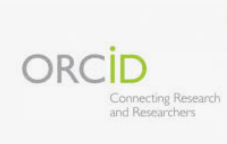About the Journal
Focus and Scope
Medical Humanities is a scientific publication of the Center for the Development of Social and Humanistic Sciences in Health (CENDECSA) and it is sponsored by the University of Medical Sciences in Camaguey, Cuba.
The center is an entity belonging to the system of science and technological innovation of the Republic of Cuba categorized by the Ministry of Science, Technology and the Environment as Unit of development and Innovation (resolution 174/2016), seated with the number of Registration 008316 in the National Registry of Science, technology and innovation entities.
Its mission is the scientific publication of results in Social and Humanistic Sciences applied to health problems.
The journal Medical Humanities was certified and registered in the National Register of Publications with the No. 2006, the mission is to publish the scientific results of the areas of social and humanistic sciences applied to health problems.
Medical Humanities constitutes the representative organ of communication for the scientific results achieved through the postgraduate, innovation and research activities corresponding to the body’s management.
The journal Medical Humanities is a member of the Scielo-Cuba collection and of Scielo Citation Index from the web of science (WOS). Medical Humanities Journal uses the Open Journals Systems (OJS) software as a platform for management and publication.
The OJS organizes the editorial process and paves the way for the evaluation and editing of the materials sent to the journal. It can be accessed to through the following web page address: http://www.humanidadesmedicas.sld.cu
Index in:
• SciELO Citation Index
• SciELO
• DOAJ
• Redib
• Lilacs
Peer Review Process
Conditions for the acceptance of the materials submitted to the journal:
The journal makes the selection by peer review of a body of national and international evaluators, whose results are emitted from the use of the evaluation form corresponding to each type of paper.
However, in correspondence with the new requirements for the development of Open Science, it can use open peer review practices as a mechanism to promote transparency in the editorial and scientific communication process.
In this, the articles that are subjected to an open peer review process, reviewers and authors know their identities, and can refine the manuscript at the same time. This model of arbitration will allow greater transparency, speed, reliability, consistency, context and motivation.
The Journal promotes the opening of research data, for which reason it invites authors to publicly post the data they use in their research, in this way they can be shared, reused and evaluated.The original article, must be accompanied by the analyzed database (upload as complementary material), in a modifiable format for Excel (.xlsx or .xls) or SPSS(.sav.
The journal selects based on peer review:
• Materials should be consistent with the subject matter.
• Methodological and work content quality.
• Novelty of the subject.
• Quality of the presentation.
• Bibliographic references should be topical and scientific related.
• Compliance of the journal’s regulations.
• The authors’ contribution statement is essential in the original articles.
Periodicity
The journal is published quarterly.
Kind of materials submitted for publication
The journal gives priority to original articles and bibliographic reviews. Editorials, letters to the editor, and, chapters in history are also published.
Description of the evaluation process
Manuscripts are evaluated by the editorial team within 30 days. Initial acceptance depends on the compliance of the journal regulations and the scientific rigor of the text.
Peer review is subsequently carried out within 90 days from the initial acceptance date. The answers to this process may be: accepted without modifications, accepted with recommendations or not accepted for publishing.
Authors should make the requested modifications in an agile way, which will make it easier for arbiters or for the editorial team to verify the corrections to what was pointed out.
Authors will be able to learn the state of their submissions on the Open Journal System web page. The publication itself will be made in less than 12 months from the date of delivery.
Open Access Policy
The content of the journal is offered free of charge to full text under the principle of making research results available and accessible.
This journal does not apply fees for publication (APC). The journal is under the Creative Commons license(CC) 4.0. (CC BY-NC-SA 4.0) Atribución-No Comercial- Compartir Igual 4.0 Internacional, assumed by the collections of open access scientific journals, which allows users to access and display the work publicly, as well as create derivative works on the condition of giving credit to the author.
The restriction of the commercial use of the contents, as defined by the Budapest declaration, is explicit by this license, which can be consulted at: Budapest Open Access Initiative's definition of Open Access.
Authors published in the journal maintain their copyright without restriction. Only be accepted as authors those who meet the criteria recommended by the International Committee of Editors of Medical journals (ICMJE).
Each author must provide his ORCID number (www.orcid.org) and the official name of his institutional affiliation. You will also need to provide the primary records used for the data if requested by the editors. According to the ICMJE, the person who has made substantial intellectual contributions to the investigation is considered an author.
The authorship credit is based on: substantial contributions to conception and design; substantial contributions to data acquisition, or their analysis and interpretation; the drafting of the article or the critical review of intellectual content; final approval of the proposed version for publication.
The foregoing determines the aspects that are taken into account in medical humanities for the legal recognition of the author, which must be accredited by the certificate to be processed by the way of the supplementary file accompanying the original article or the Bibliographical review.
The form shown in the Warnings section must be used to comply with this requirement. This proceeding avoids unwarranted or undeserved authorship, phantom authors and Honorary authorship that generate problems of credibility, responsibility and copyright.


